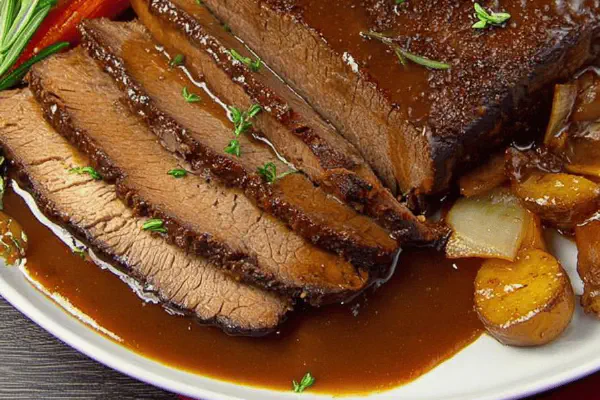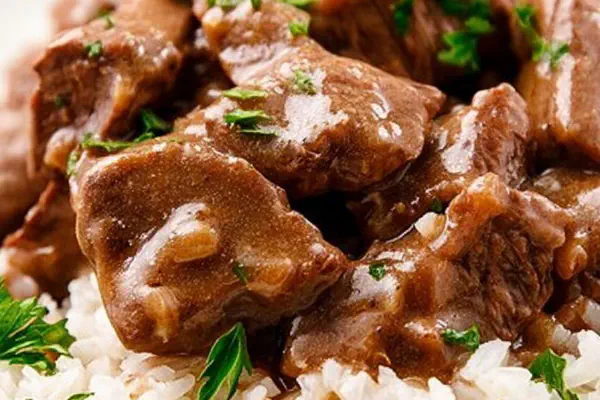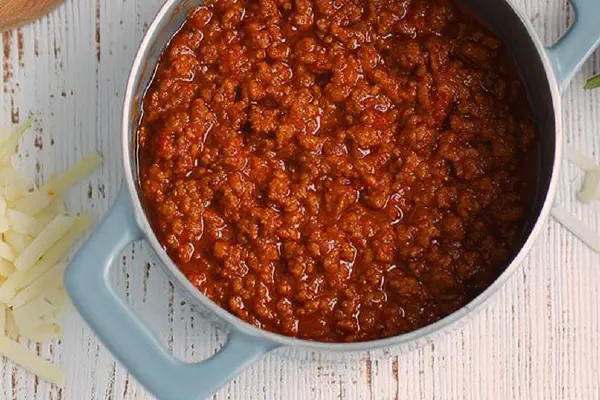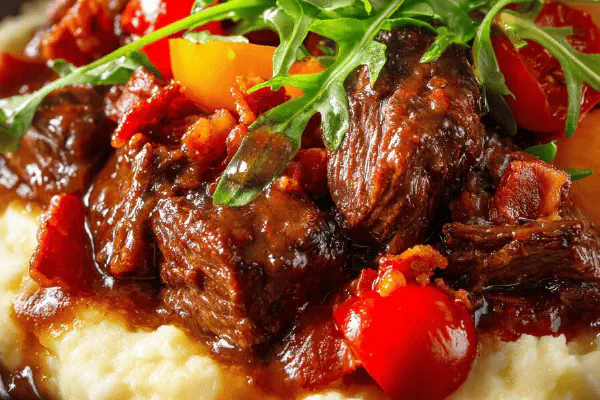Slow Braised Pot Roast
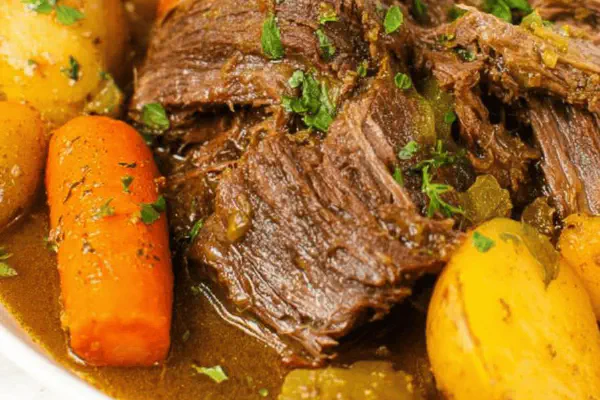
By Emma
Certified Culinary Professional
Ingredients
- 3 lb chuck roast
- 1 tablespoon kosher salt
- 1 teaspoon black pepper
- 3 tablespoons rice flour
- 2 tablespoons vegetable oil
- 1 large onion, sliced
- 3 medium carrots, roughly chopped
- 4 medium Yukon Gold potatoes, quartered
- 3 cups low sodium beef broth
- 2 sprigs fresh rosemary
About the ingredients
Method
- Oven at 295°F. Give it some time to fully heat. Lower by 5 degrees from typical 300 to avoid overcooking edge parts.
- Mix salt pepper and rice flour. Spread on parchment. Dredge meat thoroughly. Rice flour adds lightness over wheat, avoids clumpy crust.
- Heat oil in big heavy pot over med med-high. When shimmering, place roast. Don’t crowd. Brown hard on every side, 4-6 mins total. Should hear vigorous sizzle, dark crust forms.
- Take roast out. Let pot cool slightly. Add more oil if residue looks dry.
- Throw in onions and carrots. Stir often, wait for edges to caramelize around 3-5 mins. Not fully soft yet, just softened and starting golden. Smell sweet onion all up in kitchen.
- Layer potatoes on top of veggies. Stack roast on top of taters. This layering helps potato steam and soak broth flavors.
- Pour broth over meat. Nestle rosemary sprigs besides or on top. Don’t stir. Cover tightly with lid.
- Shove into oven rack, mid-level. Check after approx 3 hrs. Meat should pull apart with a fork, fibers separating with little pressure. If not ready, give extra 10-15 mins. Vegetables will be tender, smell rich and fragrant.
- Remove rosemary before serving unless you want woody chew.
- Rest roast 10 mins in pot off heat, juices redistribute, melt-in-mouth texture develops.
Cooking tips
Chef's notes
- 💡 Brown roast well. Hear that sizzle, crust must form. Skip crowding pot or meat steams. Flour coating not optional; adds texture and thickens juice into gravy. Rice flour better than all-purpose for less clumps. Salt and pepper mixed with flour before dredge keeps flavor even, avoids salt pockets.
- 💡 Veggies layering matters. Onions and carrots first, soften edges, start caramelizing but not mush. Potatoes stacked on top trap steam below, soak juice, avoid soggy bottom or dry top. Roast on top seals juice downwards, broth seeps up potato layers. No stirring after broth adds; lid locks moisture and aromatics. No peeking or heat escapes.
- 💡 Oven temps just under 300°F—295 specifically—better than 300. Slower heat means even cooking. Avoids dry edges and raw middle. Check after 3 hours by touch not timer only. Meat should pull apart easily, fibers separate with light fork pressure. If not, give extra time 10-15 mins. Visual and touch beats clock here.
- 💡 If broth reduces too much mid-cook, top up with hot water only never cold or you shock pot and stall heat. Thicker veggies add later in cooking to prevent mush. Garlic? Crush and toss in early with onions for added depth but optional. Rest meat off heat 10 mins to let juices redistribute before slicing. Skip rest ends up dry slices.
- 💡 Flour coating crust traps juices—don’t skim on it. If no rice flour, mix all-purpose with cornstarch pinch. Salt broth or rinse meat lightly if too salty store-bought broth. Swap chuck roast with brisket or arm roast fat content similar. Rosemary can be replaced with thyme or bay leaf depending on herb stash. Oil can be grapeseed or veg, hot smoking point helps browning.
Common questions
Why flour crust?
Flour helps form crust. Locks juices during browning. Also thickens broth into gravy. Rice flour less clumpy. Without it meat dries or broth too thin. Flour mixed with salt pepper before on meat.
Can I substitute veggies?
Sure. Carrots onions mandatory but try parsnips turnips for earthier notes. Yukon Gold potatoes best hold shape. Reds if gentle folding. Add denser veggies later else they overcook or vanish. Layering order counts for texture balance.
Meat not tender, what then?
Low temp long time key. If tough, keep cooking extra 10-15 mins in oven. Check fork test not timer alone. Also check if meat crowded pot or not browned well at first. Both cause steaming not crusting.
How to store leftovers?
Cool quickly. Store in airtight container refrig few days max. Freeze if long term. Reheat gently low heat with lid to keep moisture. Adding broth splash when reheating helps prevent drying out. Don’t reheat cold slices directly full blast.
